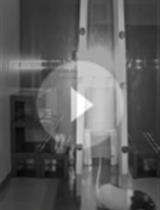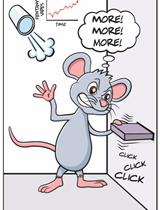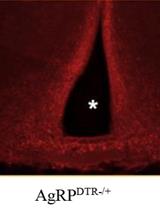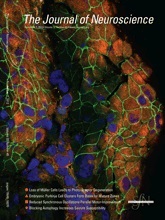- Submit a Protocol
- Receive Our Alerts
- Log in
- /
- Sign up
- My Bio Page
- Edit My Profile
- Change Password
- Log Out
- EN
- EN - English
- CN - 中文
- Protocols
- Articles and Issues
- For Authors
- About
- Become a Reviewer
- EN - English
- CN - 中文
- Home
- Protocols
- Articles and Issues
- For Authors
- About
- Become a Reviewer
Fear Conditioning Assay in Mouse
Published: Vol 3, Iss 7, Apr 5, 2013 DOI: 10.21769/BioProtoc.531 Views: 14573

Protocol Collections
Comprehensive collections of detailed, peer-reviewed protocols focusing on specific topics
Related protocols

Protocol for Measuring Free (Low-stress) Exploration in Rats
Wojciech Pisula and Klaudia Modlinska
Jan 20, 2020 4407 Views

Operant Vapor Self-administration in Mice
Renata C. N. Marchette [...] Khaled Moussawi
May 20, 2021 4489 Views

Construction of Activity-based Anorexia Mouse Models
Maria Consolata Miletta and Tamas L. Horvath
Aug 5, 2023 1724 Views
Abstract
The study of fear memory is important for understanding various anxiety disorders in which patients experience persistent recollections of traumatic events. These memories often involve associations of contextual cues with aversive events; consequently, Pavlovian classical conditioning is commonly used to study contextual fear learning. A form of contextual fear conditioning that is becoming increasingly important as an animal model of anxiety disorders uses predator odor as a fearful stimulus. Innate fear responses to predator odors are well characterized and reliable; however, attempts to use these odors as unconditioned stimuli in fear conditioning paradigms have been highly dependent on experimental setup and have produced inconsistent behavioral results. Here we present a contextual fear conditioning paradigm using coyote urine as the unconditioned stimulus, which has been shown to produce consistent contextual freezing in response to fear learning (Wang et al., 2012).
Materials and Reagents
- Mouse C57BL/6, male, 6 weeks to 4 months old (we suggest using mice of a similar age, with ~3 months old being optimal) (Jackson Laboratories)
- Paper towel, cut into 2.5 by 2.5 cm squares
- Scotch tape
- 100% coyote urine (Maine Outdoor Solutions, catalog number: ACOYD )
- Ethanol
- Cleaning solution (409 and/or Clorox Clean-Up)
- Liquid soap
Equipment
- Cylindrical Plexiglas training context 35 cm in diameter and 35 cm tall with a platform base and fitted removable cylindrical wall (custom made by Just Plastics), painted white with 5-6 black distinct visual cues along the wall in basic shapes, each about 10-12 cm in width.
- Camera/computer setup to record animal movement – overhead camera with low lighting levels: Bright enough that the computerized tracking system can track the mouse, but dark enough that the mouse is comfortable exploring the environment.
- Limelight (Actimetrics) or some other such behavioral tracking system
Procedure
- Handle mouse for 5 min per day for 3 consecutive days prior to beginning the experiment. Handle by holding each mouse and letting it climb around on and explore your hands so that they habituate to the experimenter. Mice can be run successively in groups of 5, but housed individually.
- One day before fear conditioning, place the mouse in the training context for 10 min to allow habituation to the context. Fold a piece of tape into a loop and affix to the underside of a paper towel square, taping it to the center of the cylindrical environment. Saturate the paper towel with 20 drops of water before placing the mouse into the context. For contextual consistency, present a paper towel square wetted with water in all sessions except for the predator odor conditioning session. Record all sessions on a computer with Limelight or the behavioral tracking system of your choice.
- The next day, expose the mouse to the context for 10 min to take a baseline freezing measure (again placing water in the center of the context). Remove the mouse from the context, and replace the water with a paper towel square saturated with 20 drops of 100% coyote urine. Place the mouse back in the context in the presence of coyote urine for 5 min. Remove the mouse from the contex (as a control, expose other mice to just water in place of the predator odor).
- Clean the base of the context thoroughly with 409 and/or Clorox Clean-up and soap several times. Dry and wipe with ethanol (also use ethanol to clean the context between all sessions). Ensure that no coyote odor remains. Meanwhile, air out the conditioning room by opening the door and turning on several fans. If only water has been used, clean the context in the same manner to ensure consistency.
- One hour after the conditioning session, give a short-term memory retention test by placing the mouse again in the cleaned context with water for 10 min.
- Perform 10 min long-term memory retention tests at 24 h intervals after the conditioning session. This can be repeated for as many days as you wish to continue the study.
- Analyze the percentage of time spent freezing for each session. In Limelight, you can export velocity measures for each second and use Excel filters to calculate what percentage of the total time the mouse spent below a certain freezing threshold velocity (0.5 cm/sec or something to that effect).
Acknowledgments
This protocol is adapted from Wang et al. (2012).
References
- Wang, M. E., Wann, E. G., Yuan, R. K., Ramos Alvarez, M. M., Stead, S. M. and Muzzio, I. A. (2012). Long-term stabilization of place cell remapping produced by a fearful experience. J Neurosci 32(45): 15802-15814.
Article Information
Copyright
© 2013 The Authors; exclusive licensee Bio-protocol LLC.
How to cite
Readers should cite both the Bio-protocol article and the original research article where this protocol was used:
- Wang, M. E. and Muzzio, I. A. (2013). Fear Conditioning Assay in Mouse. Bio-protocol 3(7): e531. DOI: 10.21769/BioProtoc.531.
- Wang, M. E., Wann, E. G., Yuan, R. K., Ramos Alvarez, M. M., Stead, S. M. and Muzzio, I. A. (2012). Long-term stabilization of place cell remapping produced by a fearful experience. J Neurosci 32(45): 15802-15814.
Category
Neuroscience > Behavioral neuroscience > Learning and memory
Neuroscience > Behavioral neuroscience > Animal model > Mouse
Do you have any questions about this protocol?
Post your question to gather feedback from the community. We will also invite the authors of this article to respond.
Share
Bluesky
X
Copy link








